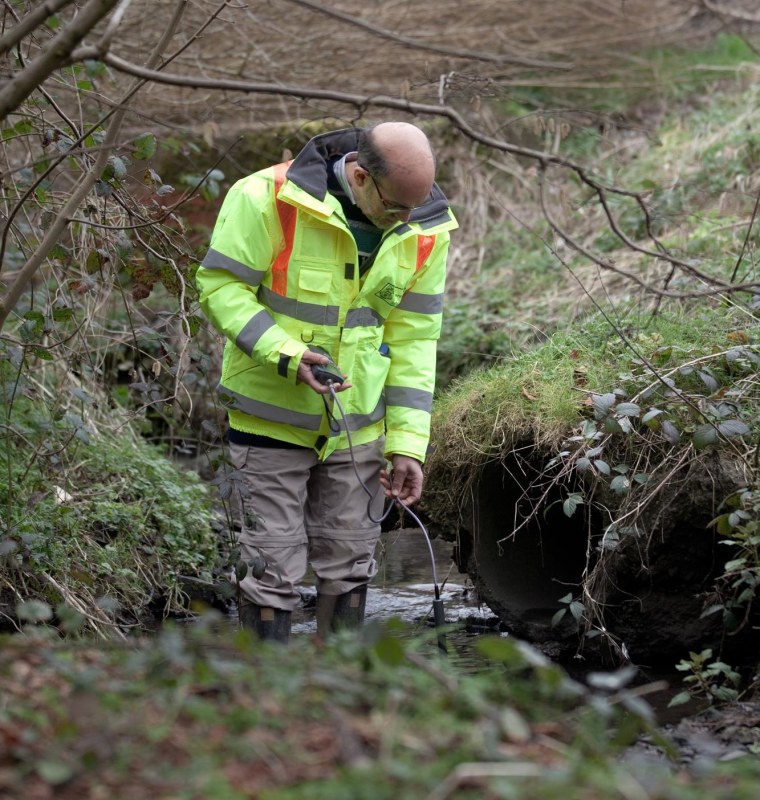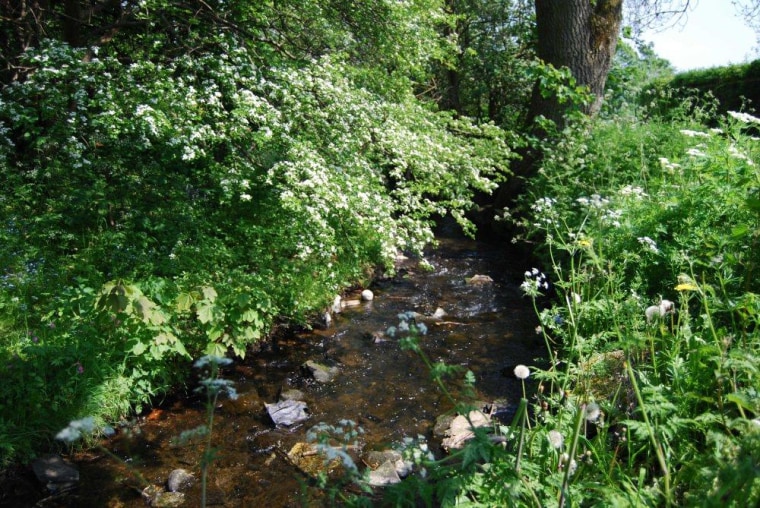Environmental watchdogs have a new weapon in the fight against the sewage polluting our rivers: glow-in-the-dark tampons.
It's not as icky as it sounds. Here's what happens: Researchers dip fresh, out-of-the-box absorbentampons into river water, and then check them out under ultraviolet light. If they glow, just as a laundered shirt might glow in UV light, that's a tip-off that the river contains traces of the organic brightening agents commonly used in toilet paper, laundry detergents and shampoos. And that, in turn, signals that untreated sewage is being dumped into the river.
In a paper published by Water and Environment Journal, University of Sheffield environmental engineers David Nicholas Lerner and Dave Mark Chandler report that the technique really, really works.
Lerner said more than a million homes in Britain have their waste water incorrectly connected to the network for surface water runoff, which means their sewage is being discharged into streams rather than going to treatment plants. "Unfortunately, it's very difficult to detect where this is happening," he said in a news release, "as the discharge is intermittent, can't always be seen with the naked eye, and existing tests are complex and expensive."
That's not the case for a box of tampons.

"Tampons are very cheap!" Lerner told NBC News in an email. "Even basic chemical analysis of a water sample is orders of magnitude more. We don't need to test for other pollutants because we are just identifying when sewage is present, not the full details of what is in it. Fluorimeters can be used to detect organic brighteners, but they are costly instruments. All we need is a $10 black light and a lightproof enclosure."
Why do feminine hygiene products make for such good detection devices? The key is that tampons are made with natural cotton, while most other absorbent cotton materials are treated with the very organic brighteners that the researchers are trying to detect. Tampons are also designed to be easy to handle.
After working out the proper procedure in the lab, the researchers suspended tampons for three days in 16 surface water outlets running into streams and rivers in Sheffield. When they fished out the tampons and looked at them under UV light, nine of the cotton samples gave off the glow associated with optical brighteners.
With the help of the local utility, Yorkshire Water, the team traced the path of pollution backward from four of the nine suspect outlets. As the researchers followed the pipes back, they dipped in a tampon at each manhole, eventually narrowing the source down to an area that could be inspected in more detail. In one case, a visual inspection confirmed that the sewer lines were hooked up incorrectly.
Besides being icky and generally unhealthy, sewage pollution changes river ecosystems and leads to the buildup of sewage fungus, which is visible as a gray lining on the riverbed. If the pollution gets bad enough, it can kill off fish and marine invertebrates. But homeowners are usually quick to resolve problems when they're pointed out, Lerner said.
The next stage is for sewage sleuths to test the waters of Bradford Beck, the river that runs through the city of Bradford in England's West Yorkshire district. Lerner is working on a citizen science project organized by the Friends of Bradford's Becks in partnership with the University of Sheffield, the local council, the water utility and environmental officials.
"The plan is first to do reconnaissance surveys with tampons of the watercourses, to narrow down where the problems are occurring, then find the guilty outfalls and monitor those," Lerner told NBC News. "The water utility will be invited to track down the households with misconnected drainage by working back up the drainage system. We successfully trialed the use of tampons for this in the paper and hope they will use it again."

